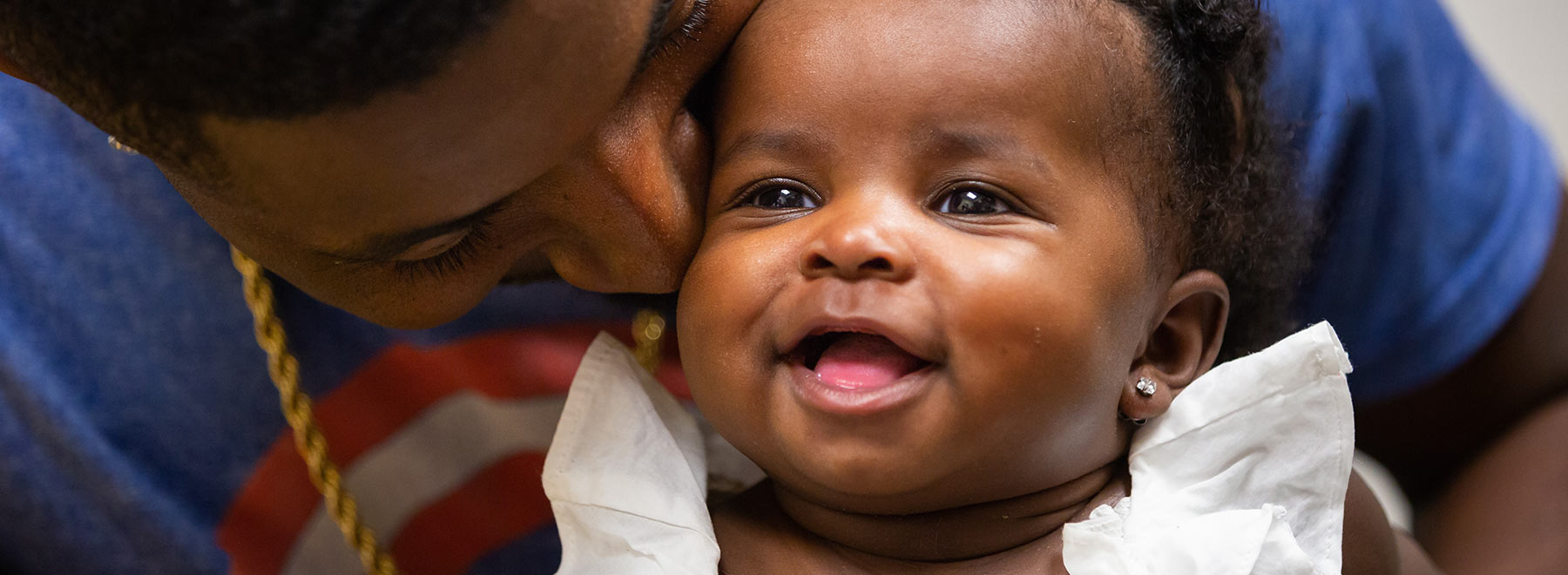Children’s of Mississippi cochlear implant patient among youngest in world
Clack, clack, clack, clack.
The sound of a wooden toy made Kadence Lane look up, her dark eyes wide with wonder.
“Hi, Kadie! What was that?” her mother, Keaire Parker, asked. Kadence looked to her left and smiled.
“Bop, bop, bop, bop, bop! Well, hello!” Dr. Victoria Kivlan exclaimed. Kadence looked to her right, giving her audiologist a grin.
At the young age of 3 months and 1 day, Kadence Lane made history for being the youngest patient ever to receive a cochlear implant at the University of Mississippi Medical Center and among the youngest in the world.
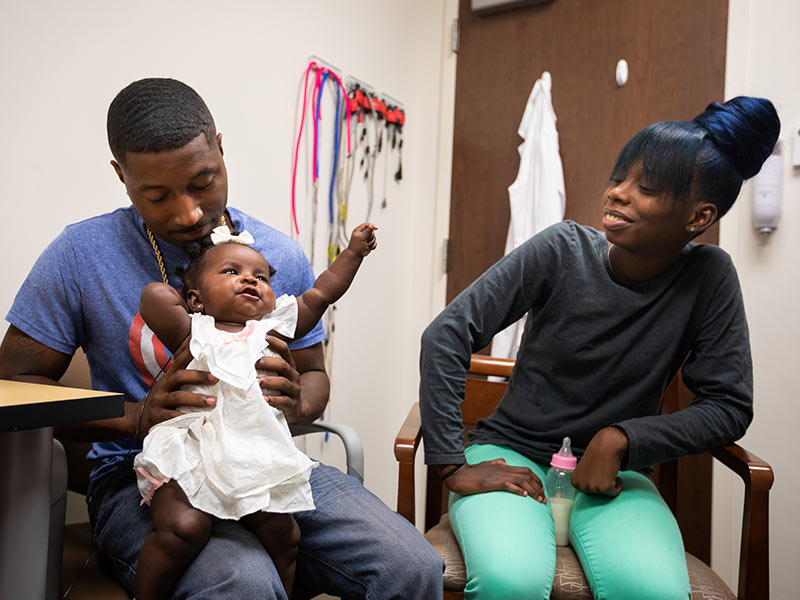
By all signs during the activation of both of her cochlear implants on Monday, the operation was a success, said Kivlan, assistant professor of otolaryngology and communicative science. Once Kivlan activated and adjusted the sound levels on the implants, Kadence, who lives with her family in Edwards, showed recognition of sounds, turning her head or eyes toward voices and sounds.
“They’re working,” Kivlan said.
Up until late February, Kadence could hear. “We were living a normal life,” said Parker.
Until one night, Kadence, then a little over 2 months old, was crying at 4 a.m. “She wouldn’t drink, and she had a temperature of 102.7.”
Kadence was taken to an emergency room in Jackson during wintry weather – “There was black ice on the road,” said Parker – but the baby’s fever was rising, hitting 104.2.
On Jan. 16, she was transferred to Batson Children’s Hospital, where testing showed Kadence had contracted meningitis, an inflammation of the protective membranes covering the brain and spinal cord. An MRI showed that the disease was causing inflammation of Kadence’s brain, and Parker was told her child would be facing a month-long course of antibiotics as a hospital inpatient.
Hearing loss is one of the most common complications of meningitis, so doctors at Batson were testing Kadence’s responses early in her stay to get a baseline, her mother said.
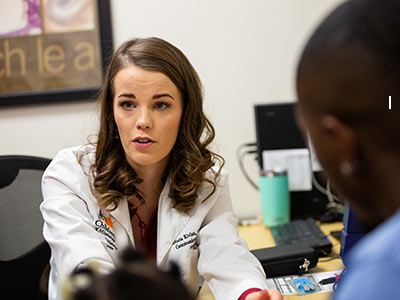
The baseline examination showed that the hearing loss had started to progress. At this point, Kadence was scheduled to receive weekly hearing tests, said Kivlan. One week later, Kadence’s hearing appeared to be decreasing to a more severe hearing loss in both ears. Just 24 hours later, testing by Kivlan revealed a profound hearing loss in both ears. Kadence’s complete loss of hearing was then confirmed the following day. This began the discussion of cochlear implantation.
Dr. Jeff Carron, UMMC professor of otolaryngology and communicative science and an ear, nose and throat surgeon, said Kadence was monitored closely through the placement of electrodes to monitor the auditory brain stem’s response to stimuli.
“We knew about the risk of hearing loss,” Carron said, “and one day during her stay at Batson, Kadence went from having a mild hearing loss to a profound one.”
The danger, for Kadence, was in the ossification that occurs in the cochlea, the part of the inner ear involved in hearing.
Hearing happens because nerve cells in the cochlea send sound signals to the brain. During ossification, which is often a complication of meningitis, the soft tissues of the cochlea turn to bone. After the infection causes deafness by damaging the inner ear, ossification will obliterate the fluid channels of the cochlea, making implantation practically impossible.
Carron knew, if Kadence could be a candidate for cochlear implant – the placement of an electronic device that acts as a replacement for those nerve cells – doctors would have to act fast. Once complete ossification occurred, Kadence would no longer benefit from a hearing aid or a cochlear implant, and that could happen in both cochlea in as little as a month.
“That’s why there was a rush to do something quickly,” Carron said. “It most likely would have been impossible for her hearing to be saved if we had waited.”
Each year, UMMC doctors perform about 50 cochlear implants, with about half of them going to children.
Cochlear implants “are different from natural hearing,” Carron said. “Patients have to learn how to use the implants, but they adapt quite well.”
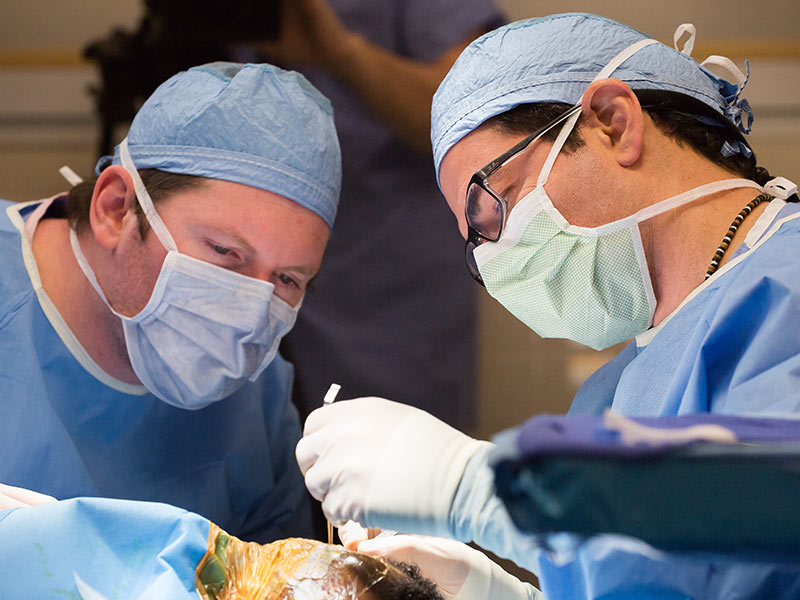
Having received her cochlear implants at a young age, Kadence may have an easier adjustment to the devices, he said. They will also aid in her development of speech and language.
Kivlan and Amy Holley, an early interventionist for children with hearing loss, will be seeing Kadence as she grows and learns.
Holley will work with Kadence and her family on listening goals, which will help Kadence as she learns to speak. Holley, since early adulthood, is a bilateral cochlear implant recipient.
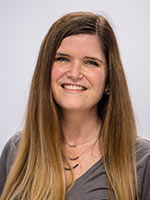
“As a baby, she’ll be working primarily with her parents,” said Holley. “A parent is the child’s first teacher.”
Kadence’s parents can help her adjust to her implants, Holley said, by providing a good listening environment, without difficulties of distance and distractions of background noise, and by boosting her language skills by talking, reading and singing to her.
Carron, Kivlan and Holley all say Kadence has the advantage of strong medical advocates, her parents.
Keaire Parker “has definitely done a lot of research on her daughter’s condition,” Carron said. “Throughout this process, she has asked good questions, and we’ve talked about what Kadence’s best options are. I have no doubt that she’ll continue being an advocate for her daughter as she proceeds through auditory-verbal therapy”
“I talked with her, and she had so many great questions,” said Holley. “I thought, ‘Wow, she is really motivated and knows what she wants for her daughter.”
Said Carron: “Time will tell, but I think Kadence will do fine. She has a very good prognosis.”


